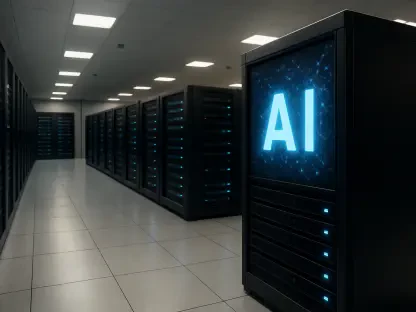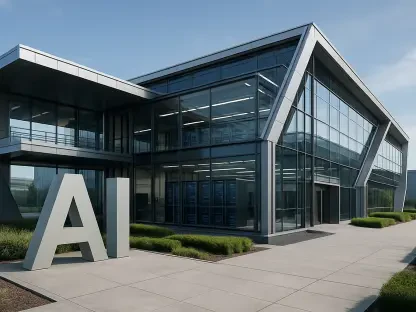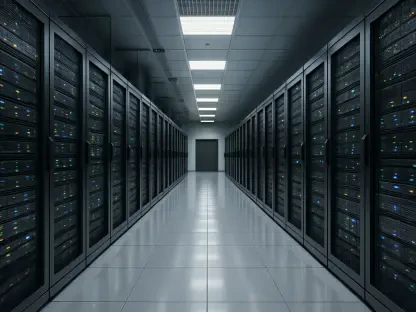Setting the Stage for AI Market Shifts
The AI industry stands at a pivotal moment, with partnerships reshaping the competitive landscape in profound ways, as seen in the recently announced landmark collaboration between Microsoft, Nvidia, and Anthropic. This alliance has spotlighted the intricate dependencies within the AI supply chain, raising eyebrows across tech circles. With Microsoft investing up to $5 billion, Nvidia committing $10 billion, and Anthropic pledging $30 billion in Azure compute capacity purchases, this deal signals more than just financial muscle—it hints at a deeper restructuring of how AI infrastructure is accessed and deployed. This market analysis delves into the forces driving such alliances, examining how they reflect broader trends in enterprise technology adoption. It aims to provide clarity on the implications for stakeholders, from IT decision-makers to industry strategists, while projecting the trajectory of AI supply chain integration. By dissecting current patterns and future possibilities, this exploration seeks to uncover what lies beneath the surface of these high-stakes collaborations.
Deep Dive into AI Market Trends and Projections
The Rise of Interconnected Ecosystems in AI
The AI sector has evolved into a tightly woven network where cloud providers, hardware manufacturers, and model developers are increasingly interdependent. This trend, evident in the Microsoft-Nvidia-Anthropic partnership, showcases a circular flow of capital and resources that defines modern AI development. Major players are no longer operating in silos; instead, they rely on mutual investments and infrastructure commitments to sustain the colossal demands of cutting-edge models. Industry data indicates that over 60% of AI firms now engage in multi-vendor partnerships to secure compute power, a sharp rise from just a few years ago. This interconnectedness, while fostering innovation, also creates a web of dependencies that can impact market stability if any single node falters. As these ecosystems grow, enterprises face the dual challenge of leveraging expanded access while navigating the risks of over-reliance on specific vendors.
Model Choice vs. Operational Complexity: A Balancing Act
One of the most striking aspects of this deal is its promise to enhance model choice for enterprise customers through the integration of Anthropic’s Claude AI into Microsoft Azure. Alongside existing offerings like OpenAI’s models, this move positions Azure as a hub for diverse AI solutions. However, beneath the surface lies a significant hurdle: the complexity of decision-making for IT leaders. Selecting an AI model now ties directly to specific hardware architectures, cloud environments, and cost frameworks, often leading to unforeseen expenses such as data egress fees. Recent surveys reveal that nearly half of tech executives are directly involved in hardware selection, a shift driven by the strategic weight of AI infrastructure. Looking ahead, this tension between choice and complexity is expected to intensify, pushing firms to develop robust governance structures to manage multi-vendor environments effectively.
Anthropic’s Strategic Diversification: A Market Hedge
Anthropic’s role in this alliance highlights a calculated approach to market positioning, reflecting a broader trend of diversification among AI developers. By aligning with Microsoft and Nvidia while maintaining ties to AWS for Trainium chips and Google for TPUs, Anthropic mitigates risks tied to GPU shortages and escalating inference costs. This multi-vendor strategy ensures access to varied technological strengths, from Nvidia’s prowess in inference performance to specialized workloads on TPUs. Market analysts project that such diversification will become a standard practice, with over 70% of AI labs expected to adopt similar approaches by 2027. While this offers resilience against supply chain disruptions, it also introduces operational challenges like platform compatibility. For enterprises, Anthropic’s playbook serves as a potential model, though it underscores the need for streamlined integration processes to avoid fragmented workflows.
Hardware Competition: An Open Field with No Clear Leader
The hardware landscape underpinning AI development remains fiercely competitive, with no single vendor poised to dominate. Nvidia’s deep integration in this partnership, including joint engineering on future Claude models for its next-gen chips, signals strong alignment, yet it does not equate to exclusivity. Anthropic’s use of multiple chip architectures mirrors an industry-wide acknowledgment that regional disparities, export controls, and technical constraints like memory bandwidth limitations necessitate varied solutions. Market forecasts suggest that custom ASICs and alternative chip designs will capture a growing share of the AI hardware space, rising by 25% over the next two years. This fluidity compels both developers and enterprises to adopt multi-node strategies, ensuring agility in an unpredictable environment. The lack of a definitive hardware leader continues to drive innovation, but it also fragments standardization efforts across the sector.
Future Outlook: Integration and Cost Pressures
Peering into the near future, the AI market is likely to see even tighter integration across cloud capacity, model deployment, and silicon strategies. The resource demands of next-generation AI systems will push cross-pollination deals to become commonplace, as no single entity can shoulder the burden alone. Economic factors, such as rising compute costs, are projected to drive more firms toward diversified vendor relationships, with spending on multi-cloud AI infrastructure expected to double by 2027. Additionally, regulatory shifts, including potential restrictions on advanced hardware exports, could disrupt global supply chains, prompting regionalized solutions. Technological advancements, such as Nvidia’s upcoming chip architectures, may redefine performance benchmarks, but they will also elevate cost structures. Enterprises must brace for a landscape where strategic foresight and adaptability outweigh the pursuit of singular, cutting-edge tools.
Reflecting on Market Insights and Strategic Pathways
Looking back, the analysis of the Microsoft-Nvidia-Anthropic collaboration reveals a transformative phase in the AI industry, marked by intricate supply chain links and strategic interdependencies. It highlights how such partnerships, while expanding access to frontier models, also burden enterprises with complex technical and financial decisions. The competitive hardware arena and Anthropic’s diversification underscore the necessity of flexibility in a volatile market. Moving forward, businesses need to adopt a portfolio mindset, testing various models and platforms to sidestep vendor lock-in. Establishing clear governance for vendor selection and cost management emerges as a critical step to mitigate risks. Staying attuned to hardware innovations and regulatory changes also proves essential for maintaining a competitive edge. Ultimately, navigating this interconnected AI landscape demands a blend of strategic planning and adaptability, ensuring that stakeholders can capitalize on emerging opportunities while addressing inherent challenges.









